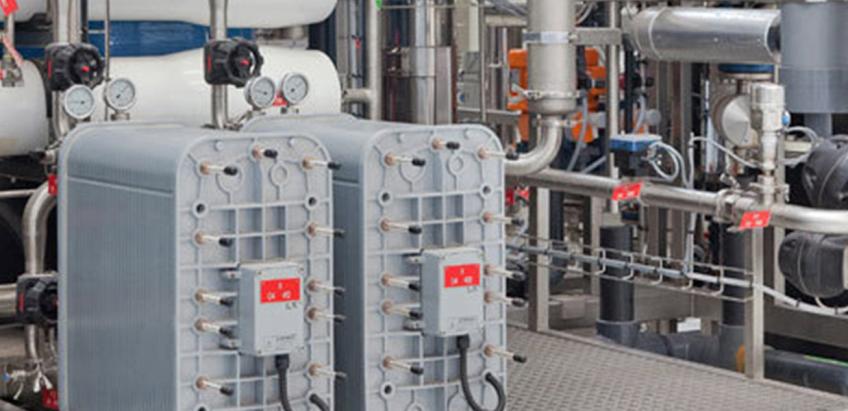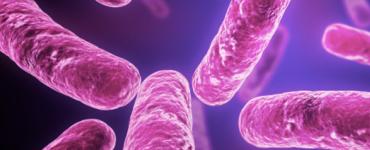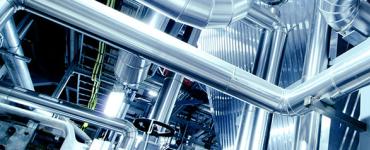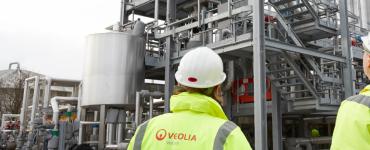- Home
- Latest News
- EDI (Electrodeionisation) based clinical lab systems

EDI (Electrodeionisation) based clinical lab systems
A fundamental requirement for today's laboratories is a constant, reliable supply of purified and ultrapure water (UPW). Daily requirements of up to 1000 litres are not uncommon. In response to this demand, new technologies have replaced basic distillation, enabling extremely high purity water (>99.9999999 % pure) to be produced on tap, at minimal cost.
Clinical autoanalysers, used to automatically process blood and serum samples, require UPW as an essential feedstock, and the continual use of equipment such as autoclaves, sterilisers and endoscope reprocessors places an ever greater demand on the supply of purified water. To ensure economic operation, autoanalysers may operate up to 20 hours a day and, although they typically require only a few micro-litres of UPW per sample, their high throughput can result in the consumption of vast quantities of water. A reliable, efficient UPW supply is essential, as downtime significantly impacts on the delivery of results. The challenge was to design a laboratory water purification system to maximise the capacity of existing'Tap to Type I Purifiers' without the need for frequent intervention to replace consumables.
Electrodeionisation technology has existed for many years, but it is only recently that it has found widespread application. EDI technology combines ion exchange resins and ion-selective membranes with direct current to remove ionized species from water, overcoming some of the limitations of ion exchange resin beds, such as the release of ions as the beds exhaust and the need to change or regenerate the resin.
Water passes through one or more chambers containing ion exchange resin between cation or anion selective membranes, combined into a stack. Stacks can consist of a number of different chambers, combined in a variety of different ways with different membranes, resins or mixtures, and different flow paths. Ionized species in the water bind to the resin and, under the influence of an externally applied electric field - which also produces the H+ and OH- ions required to continuously regenerate the resin - migrate to a separate chamber (Figure 1) where they are flushed to waste. The efficiency of the process - and the ultimate water quality achieved - is enhanced by filling the respective waste chambers with ion exchange resin, providing a conductive path for the ions and significantly improving performance. Subsequently, purity can be further increased by passing the water through a mixed bed resin.
Figure 1: Schematic diagram of the EDI process.
Electrodeionisation is the ideal technique to complement the multiple technologies already in use for water purification, but an understanding of the mechanisms and variables involved - such as feedwater chemistry - is essential to ensure problems and premature failure are avoided. Investigation of the chemistry and physics involved with the process has resulted in a range of successful EDI-based products being developed and patented; however, the relatively high cost of the EDI stack precluded it from most laboratory applications, as its use could only be justified where high volumes of UPW were required. Investment in novel stack designs and advances in membrane and electrode technology have since reduced the relative cost of the stack, enabling it to be considered for a wider range of applications. Today, thousands of EDI systems are installed worldwide, establishing electrodeionisation as a core technology for the production of purified and ultrapure water for laboratory applications.
The latest EDI system from ELGA is theMEDICA Pro EDI, which has been designed for clinical diagnostic labs for applications including immunochemistry and general chemistry automatic clinical analysers. The product has been developed to produce consistently high purity water at economical running costs. This is becoming an increasingly important factor in system specification, where tender documents are expected to include details of ongoing running costs, consumable usage and carbon footprint.
The advantages of EDI technology for water purification
Continuous, consistent supply of pure water
EDI technology can be operated continuously and is capable of producing purified water with a resistivity in excess of 18 MΩ.cm. Minimal user intervention is required, as the ion exchange resin is continually regenerated during the process.
Cost-effective
EDI is a low maintenance technology that uses relatively small amounts of electricity to produce high purity water, reducing energy costs. Continuous regeneration of the ion exchange resin eliminates the need for frequent and costly deionisation pack replacement, resulting in lower operating costs and minimal downtime.
Low bacteria count
EDI systems provide a bacteriostatic environment, which inhibits the growth of bacteria and other microorganisms that can cause problems if present in laboratory water supplies.
Low energy, low carbon footprint
EDI systems have a low energy requirement and can be optimised for peak performance or peak efficiency, taking energy consumption and carbon footprint into consideration at the design stage. By investing in tools to aid system design, ELGA has ensured that its systems have low energy usage and a low and quantifiable carbon footprint.
Minimal service interventions
For many applications - particularly feedwater for clinical autoanalysers - a continuous supply of high quality water is essential. The inclusion of an EDI stack eliminates the need for frequent replacement of deionisation cartridges, minimising downtime due to service interventions.
Salt removal, ion reduction
Ionic purity is an important consideration for many applications. EDI technology removes dissolved, ionisable materials such as salts, acids and bases.
Avoids sudden release of boron and silicon
Weakly charged anions such as those based on silicon and boron are not efficiently removed by conventional water purification technologies, and are usually the first ions to be released from the ion exchange resin as the deionisation cartridge approaches depletion. Because they are weakly ionized, borates and silicates have a lower effect on resistivity measurements and a sudden increase in the concentration of these impurities can occur without the user noticing, to the detriment of experiments and instruments. As the impurities are continuously removed into a waste stream, EDI is an efficient means of removing borates and silicates, preventing a sudden breakthrough from occurring.
Effective removal of total organic carbon (TOC)
Total organic carbon in pure water is another major concern, impacting on many applications and impairing purification processes by binding to ion exchange resins and decreasing their capacity. Charged organic contaminants are removed effectively by the use of EDI technology. EDI also only uses small volumes of ion exchange resins, typically for years, minimising the ongoing release of resin leachates and avoiding any displacement of organic components of the resins when deionisation packs are changed.













